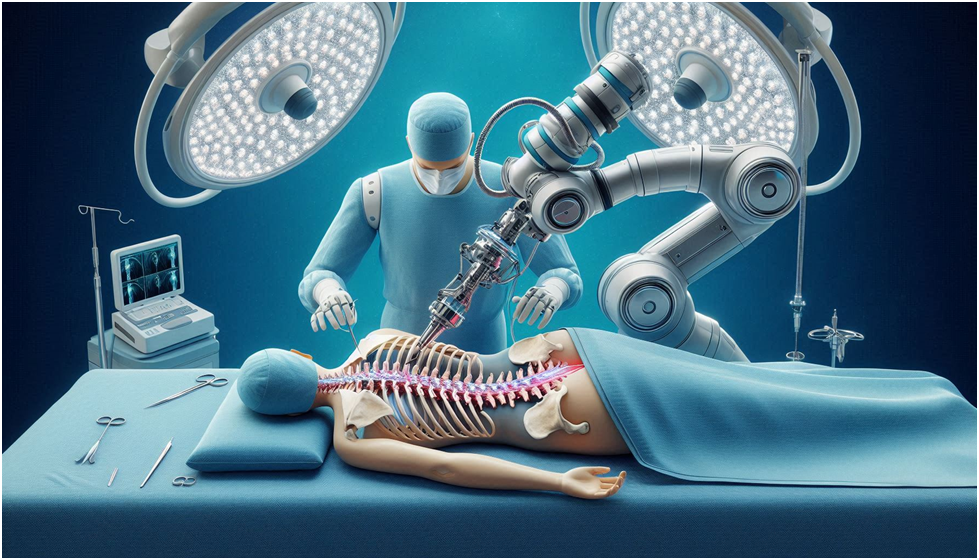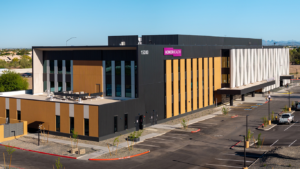A tiny few things can be more frustrating than dealing with chronic back pain. More so if it seems like there’s no end in sight. However, there’s some comforting news for those who suffer from spinal issues.
Advanced surgical techniques now offer new hope.
With minimally invasive procedures and robotic-assisted surgeries leading the charge, you get shorter recovery times and better outcomes. This revolution in spinal health is happening right now.
In shedding more light on this, join us as we explore how these innovations can make a difference in your life or that of someone you know.
Minimally Invasive Spine Surgery Techniques
Long gone are the days when spinal surgery meant large incisions and lengthy recovery times. Minimally invasive spine surgery techniques now use small incisions, specialized instruments, and advanced imaging to perform complex procedures with precision. These methods reduce muscle damage, blood loss, and postoperative pain.
Patients often experience faster recoveries and shorter hospital stays compared to traditional open surgeries. For instance, endoscopic discectomy allows surgeons to remove herniated disc material through a tiny incision using an endoscope for guidance.
In line with this, experts like Dr. Branko Skovrlj utilize minimally invasive spine surgery techniques to effectively address specific spinal conditions through tailored approaches.
These innovations significantly improve patient outcomes by minimizing trauma while maximizing surgical accuracy.
The Role of Robotic-Assisted Surgeries in Spinal Care
Robotic-assisted surgeries offer precision and consistency beyond human capability. Using robotic arms controlled by surgeons, these systems perform delicate tasks with millimeter accuracy.
Consequently, they reduce variability in surgical outcomes and enhance the safety profile of complex spinal procedures.
During such operations:
● Enhanced Precision: Robots execute movements with exactness.
● Reduced Complications: Minimized risk of human error.
● Faster Recovery: Less tissue damage leads to quicker healing.
Therefore, patients benefit from fewer complications and shorter recovery times compared to conventional methods. Ultimately, integrating robotics into spine surgery has set a new standard for successful interventions across various conditions.
Advanced Imaging and Diagnostic Tools for Spinal Health
As mentioned earlier, advanced imaging plays a crucial role in minimally invasive spinal surgery. Techniques like MRI, CT scans, and 3D fluoroscopy offer detailed views of the spine’s anatomy.
These tools enable precise diagnosis and guide surgeons during complex procedures. For example, intraoperative CT provides real-time images, ensuring accurate hardware placement in spinal fusions.
Additionally, advanced diagnostic tools help identify specific issues such as nerve compression or disc degeneration early on. Consequently, these technologies enhance treatment planning and improve overall patient outcomes by facilitating targeted interventions.
Personalized Treatment Plans in Modern Spine Surgery
Imagine a spinal surgery tailored exactly to your needs. Personalized treatment plans now utilize patient-specific data, such as genetic markers and lifestyle factors, to design the most effective approach.
For example, 3D printing can create custom implants that perfectly fit an individual’s anatomy. Genetic profiling may reveal susceptibility to certain conditions, guiding preventative care.
By focusing on the unique aspects of each patient’s case, surgeons improve outcomes and enhance recovery experiences significantly compared to standardized methods.
Innovations in Spinal Fusion Procedures
Thanks to modern tech, issues like spinal deformities, excruciating back pain, and instability are increasingly becoming easy to address. Through spinal fusion, surgeons can now use biologics and advanced hardware for more stable fusions.
Innovations like interbody cages and bone graft substitutes promote better bone growth and alignment. These advancements enhance the success rates of surgeries while minimizing recovery times.
How AI is Enhancing Surgical Precision
As Artificial Intelligence continues to find more and more applications in healthcare and medicine, one discipline isn’t showing signs of being left out – surgery. Today, AI algorithms assist in planning spinal surgeries by analyzing patient data to predict outcomes.
Robotic systems leverage AI for real-time adjustments during procedures. Additionally, machine learning enhances imaging techniques, providing surgeons with clearer views of critical structures. This integration results in unprecedented precision and safety during spinal operations.
Cutting-Edge Pain Management Strategies Post-Surgery
The importance of advanced surgical techniques doesn’t stop at the actual procedure. Managing post-surgical pain effectively is crucial for improved spinal health.
Beyond medication, strategies like nerve stimulation, targeted physical therapy, and regenerative medicine (e.g., platelet-rich plasma) offer innovative solutions. These methods reduce reliance on opioids and enhance recovery by promoting healing and mobility.
Advanced surgical techniques are changing lives, offering new hope and better outcomes for spinal health. With continuous innovations and expert care, the future looks brighter for those facing spine-related challenges. Stay informed and optimistic about the possibilities that lie ahead in spinal healthcare.




